Design Study: Chrysler Sebring
Sometimes the photos don’t do a car justice. This is one of those times: the 2007 Chrysler Sebring is even uglier in the metal than it is in the photos. Hunting for a parking space last week, I had the bad luck to come upon a parked black 2007 Sebring in full production trim. Chrysler’s PR flacks gush that the new sedan is a “strikingly beautiful design” that’s “poised to inspire.” They got the second part right. Chrysler fans are warned to look away as I share the fruits of my inspiration.
With the new Sebring, Chrysler’s designers have taken the art deco design cues that have made the Crossfire sports car such a rousing success (most depart dealer lots within a year of arriving) and transferred them onto the most cursed proportions in recent memory. A rotund proboscis attached to a huge front overhang leads into a sweeping arched roofline that terminates in an abbreviated rear deck. The Saturn ION employs similar proportions, as will the 2007 Nissan Sentra. But Chrysler’s rendition is the worst of a bad bunch.
Compare the Sebring to the 2003 Airflite concept that supposedly inspired it. You know those made-for-TV movies that were supposedly “inspired by a true story?” It’s the same deal: shared details, totally different result. On the Airflite, the car’s nose is more chiseled and much less bulbous, the front wheel opening doesn’t crowd the front door opening and the roofline has more sweep and less arch. The Airflite is strikingly beautiful. The Sebring is an Airflite that’s totally let itself go.
Returning to the nose; round contours and huge, droopy headlights suggest a theme originally intended for a minivan, but later stretched for sedan duty. As on the Crossfire, Chrysler’s stamped a half dozen grooves into the hood. Perhaps they’re there for the dozen or so people who have lusted after a Crossfire, but did not buy one because they needed a back seat for the kiddies.
The doors are the best part of the design— by default. As on the Pacifica, a deep undercut character line breaks up tall body sides. On the Crossfire, a character line that begins similarly performs a complicated transition from a concave to a convex surface. No awe-inspiring gymnastics here; just reasonably clean body sides whose sheerness conflicts with the blobby front fenders and amorphous rear lamps.
Sometimes when a car is designed, the designers and the engineers work at cross-purposes. Bad proportions are one clue. The window outline is another. When the engineers fail to deliver the window outline the designers desire, the designers often “cheat”; they’ll tack on a black bit of trim to make it appear that the windows extend further than they do. It’s a nasty little trick that never works well: the automotive equivalent of heavy eye makeup. Then again, I once told a [long gone] girlfriend she might look better without so much eye makeup. When she stopped putting it on I realized why she'd been using so much. It’s like that with the new Sebring.
On a black car, like the one I saw, the black trim triangle disappears into the body. And, what do you know, my eyes wanted it back. Man, that’s one fat, ugly C-pillar. Even if the window opening were as large as the designers wanted, the result still wouldn’t have looked good. The Sebring is only a couple inches taller than the Airflite, but those two inches, when combined with a seven-inch wheelbase reduction and a more conventionally-raked windshield, are passion killers. Like a pilot attempting an emergency landing on a short, alpine airstrip, the sweeping roofline must come down too far, too fast. Seems the designers had given up on a graceful landing. They just wanted to land.
The Sebring’s designers apparently ran out of any ideas, good or otherwise, once they reached the Sebring’s literal end. The sedan’s large tail lamps could be from any one of the innocuously styled, utterly forgettable sedans of the late aero period. Their shapelessness bears some kinship to the droopy headlights, but none to the rear quarters in which they are embedded.
Overall, the Sebring appears to be the outcome of a “just get it done” mentality. It isn’t hard to guess the source of such a mentality: DaimlerChrysler ended its decades-old partnership with Mitsubishi, the provider of the new Sebring’s platform, during the sedan’s development. Designers and engineers often have trouble negotiating the compromises demanded by art, science, budgets and regulations.
Spreading the effort across two companies that were increasingly at odds must have exponentially compounded this difficulty. It’s a shame the divorce didn’t come sooner. Because it did not, we have the 2007 Sebring, a car so hard on the eyes it might single-handedly destroy Chrysler’s lingering reputation as a design leader.
[Michael Karesh operates www.truedelta.com, a vehicle reliability and price comparison website.]
Michael Karesh lives in West Bloomfield, Michigan, with his wife and three children. In 2003 he received a Ph.D. from the University of Chicago. While in Chicago he worked at the National Opinion Research Center, a leader in the field of survey research. For his doctoral thesis, he spent a year-and-a-half inside an automaker studying how and how well it understood consumers when developing new products. While pursuing the degree he taught consumer behavior and product development at Oakland University. Since 1999, he has contributed auto reviews to Epinions, where he is currently one of two people in charge of the autos section. Since earning the degree he has continued to care for his children (school, gymnastics, tae-kwan-do...) and write reviews for Epinions and, more recently, The Truth About Cars while developing TrueDelta, a vehicle reliability and price comparison site.
More by Michael Karesh
Latest Car Reviews
Read moreLatest Product Reviews
Read moreRecent Comments
- Jeff One less option will be available for an affordable midsize sedan. Not much can be done about GM discontinuing the Malibu. GM, Ford, and Stellantis have been discontinuing cars for the most part to focus on pickups, crossovers, and suvs. Many buyers that don't want trucks or truck like vehicles have moved onto Japanese and South Korean brands. Meanwhile large pickups and suvs continue to pile up on dealer lots with some dealers still adding market adjustments to the stickers. Even Toyota dealers have growing inventories of Tundras and Tacomas.
- Lorenzo This car would have sold better if there was a kit to put fiberglass toast slices on the roof.
- Lorenzo The Malibu is close to what the 1955 Bel Air was, but 6 inches shorter in height, and 3 inches shorter in wheelbase, the former making it much more difficult to get into or out of. Grandma has to sit in front (groan) and she'll still have trouble getting in and out.The '55s had long options lists, but didn't include a 91 cubic inch four with a turbo, or a continuously variable transmission. Metal and decent fabric were replaced by cheap plastic too. The 1955 price was $1765 base, or $20,600 adjusted for inflation, but could be optioned up to $3,000 +/-, or $36,000, so in the same ballpark.The fuel economy, handling, and reliability are improved, but that's about it. Other than the fact that it means one fewer sedan available, there's no reason to be sorry it's being discontinued. Put the 1955 body on it and it'll sell like hotcakes, though.
- Calrson Fan We are already seeing multiple manufacturers steering away from EVs to Hybrids & PHEVs. Suspect the market will follow. Battery tech isn't anywhere close to where it needs to be for EV's to replace ICE's. Neither is the electrical grid or charging infrastructure. PHEV's still have the drawback that if you can't charge at home your not a potential customer. I've heard stories of people with Volts that never charge them but that's a unique kind of stupidity. If you can't or don't want to charge your PHEV then just get a hybrid.
- AZFelix The last time I missed the Malibu was when one swerved into my lane and I had to brake hard to avoid a collision. 1 out of 5⭐️. Do not recommend.



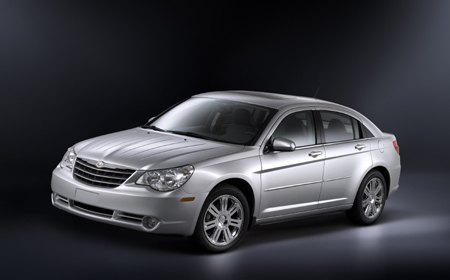

















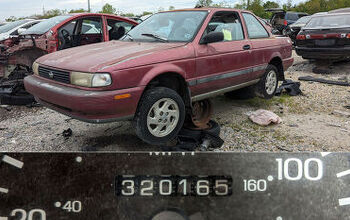
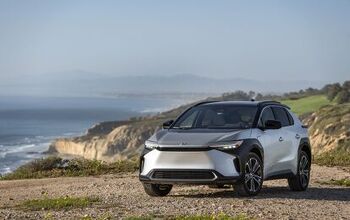
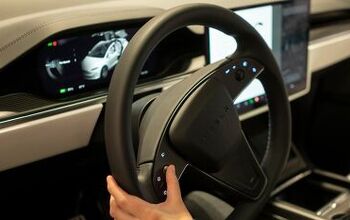
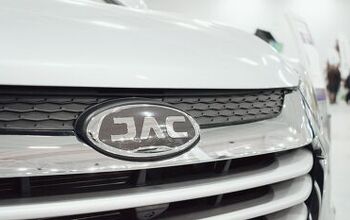


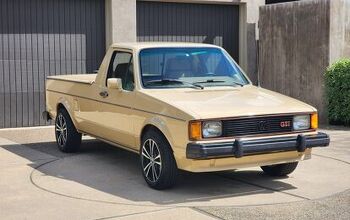

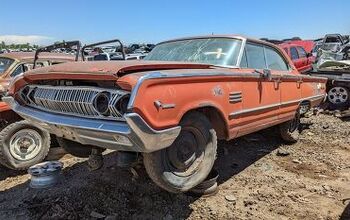
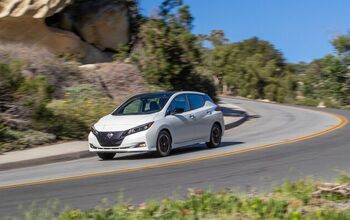

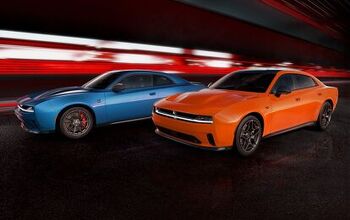
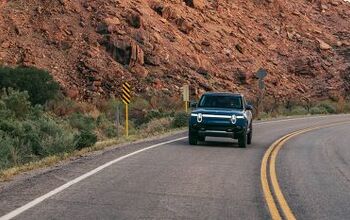

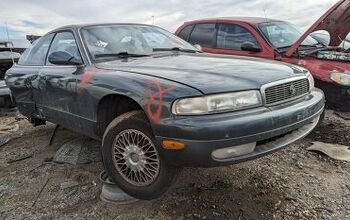

Comments
Join the conversation
Thank you Jonny, the Accord is quite attractive. Worse yet, Chrysler actually expects this Sebring to compete with the Camry/Accord. And just think how well they designed the 300c...
While I actually like the new Sebring, I've got to say that the hood looks like a ribbed condom...you know the Durex HerPleasure kind?